Volvo just announced it will stop making the S60 sedan – and so another sedan will soon be gone. The reasons why are interesting.
Superficially, the S60 is being retired because it’s not selling. In 2023, only 1,406 examples found buyers – down from 5,277 that did the year before. But why isn’t the S60 – why aren’t sedans, as a class – selling?
Probably because they are too small. And not just in terms of their size. Especially at this price.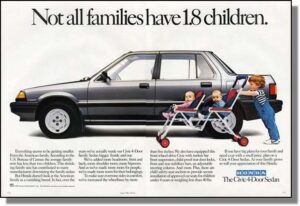
The S60’s base MSRP – for the B5 Core trim (who comes up with these insipid, forgettable names?) is $42,000 and for that sum you get a compact-sized, front-wheel-drive sedan with a 2.0 liter four cylinder engine and a tiny (11.6 cubic foot) trunk.
All of which would be ok, if the MSRP were $22k or so.
Small sedans being – fundamentally – impractical cars for families and for other-than-commuting and unappealing except to those looking for an inexpensive, economical small car. Here it is worth noting that the only sedans that are still selling well are small sedans – with small MSRPs. Models such as the Honda Civic and the Toyota Corolla and the Mazda3. But their slightly larger, but still not-very-practical (chiefly due to their small trunks and limited capacity to carry cargo) and more pricey siblings, the Accord and Camry, are not selling as well as they used to. And both of these sedans used to be two of the best-selling vehicles on the market.
The market for such sedans continues to wane, as evidenced by the winnowing of what’s available. Mazda dropped the 6 sedan, which was once a strong competitor in the class. Ford no longer makes the Taurus. GM just cancelled the Chevy Malibu. Both of these were once very popular.
There are still a few other models left in the segment – including the Hyundai Sonata – but there are now fewer than there have ever been.
Why?
Because people are less inclined to pay a lot to get not very much.
The Camry and Accord are now four cylinder-only, which is pretty chintzy given they both start just shy of $30,000. There was a time – it was not so long ago – that you could get a mid-sized family sedan with a V6, for the same or even less. That is part of what made it worth spending more than it cost to buy a compact-sized four cylinder-powered small sedan. It’s not worth it anymore – if the slumping sales figures are a metric of that.
Since you can’t get a V6 anymore – even for $30k (or $40k, for that matter) you might as well at least buy more space. And that is why crossovers have become the “car” of choice for most people, who need a practical vehicle. The same dynamic plays out the higher up the MSRP food chain you go. Sales of what are still categorized as full-size sedans are also slumping. Once again, because you get less of everything – yet are expected to pay more for it.
Look, for example, at a current-year, full-size (sic) luxury sedan. The world in italics to make note of the fact that there are no longer any sedans available that are “full-sized,” that aren’t luxury sedans – and priced accordingly. The Chrysler 300/Dodge Charger and Toyota Avalon were the last “full-sized” sedans that weren’t luxury-branded (and priced) sedans.
That leaves models like the BMW 7 Series, Mercedes S-Class and Audi A8 sedans – all of which have starting prices approaching six figures. The A8 – which stickers for $90,900 to start – is the relative bargain of the bunch. And what do you get for that? You get a sedan that would be considered mid-sized by the standard that obtained back when full-sized, rear-wheel-drive American-brand sedans from Ford and Chevy abounded; the A8 is only 209.5 inches long, which is short n’ stubby compared with something like a 1970s-era Buick Electra 225 (which was 225 inches long) or even a 2011 Ford Crown Vic, which was 212 inches long – and cost about half what Audi charges for a new A8.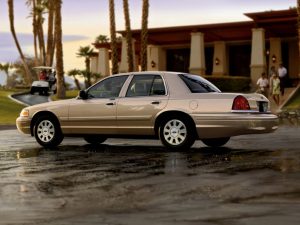
You get a 3.0 liter V6 (vs. the 4.6 liter V8 that came standard in the Vic; never mind the 7.5 liter V8 that came standard in the old Electra 225 or the 8.2 liter, 500 cubic inch V8 that came in Cadillac sedans of the same era) and a trunk so small – just 12.5 cubic feet – that this car is no more practical than a current-year compact-sized sedan such as Honda Civic or Corolla.
Yes, the A8 is “nice.” It has leather seats. It has a great stereo. It has power windows and locks and climate control AC and a big flatscreen display. So does pretty much every other new vehicle.
What it hasn’t got is size – and that’s what’s lacking.
None of them (modern sedans) do and that is why modern sedans are fading away in favor of crossovers the same size that at least have more space inside and trucks and SUVs that are the last sizable vehicles you can still buy.
If you can afford to.
The why for all of the above being the distorting effect of federal gas mileage mandates that discourage the manufacture of large sedans but encourage the manufacture of large trucks and SUVs. Crossovers being the consolation prize that most people can afford.
That’s what we get after 50 years of abiding the federal government’s regulatory interpositions; of its “saving us money” and “keeping us safe.”
Enjoy the ride.
. . .
If you like what you’ve found here please consider supporting EPautos.
We depend on you to keep the wheels turning!
Our donate button is here.
If you prefer not to use PayPal, our mailing address is:
EPautos
721 Hummingbird Lane SE
Copper Hill, VA 24079
PS: Get an EPautos magnet or sticker or coaster in return for a $20 or more one-time donation or a $10 or more monthly recurring donation. (Please be sure to tell us you want a magnet or sticker or coaster – and also, provide an address, so we know where to mail the thing!)
If you like items like the Baaaaaa! baseball cap pictured below, you can find that and more at the EPautos store!



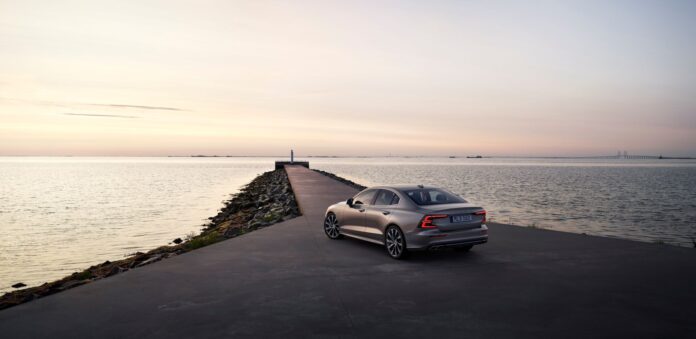

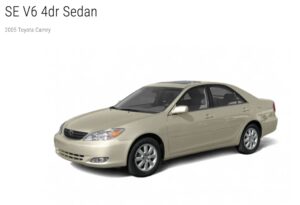
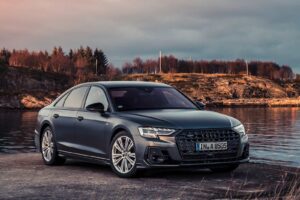







This is all thanks to people like M. A. that get off using the govt. as a billy club by proxy.
Indeed, Graves!
I hope that little weasel sees this.
The naming convention on the trim level you mentioned (B5) actually meant something to Volvo fans. It’s an abbreviation of the engine code of an engine they released in the 850 back in the mid 90’s. B for Benzine and 5 for an inline 5-cylinder arrangement. My 1995 850 T-5R wagon has a B5244T5 engine (sourced from a 2006 S60, btw). Unfortunately, the current S60 has a turbo 4, so the B5 nomenclature is basically an insult to all actual Volvo enthusiasts.
I miss the B230F.
I miss the BFG 9000.
Thanks, Wally – I didn’t know that! Learn something new – hopefully – every day!
Marxist government dictating which vehicles slaves can buy through regulations….
Soon the only available vehicles will be EV’s….but they are not selling…a huge problem….
Lots of EV stocks are crashing…near bankruptcy….
EV maker Fisker, which had gone public via merger with a SPAC in October 2020 amid fake promises and ludicrous projections, and then burned over $1 billion of investor cash, has finally filed for bankruptcy protection Monday night, following in the footsteps of a bunch of other EV SPACs…….Shares of Fisker closed at 2 cents today….was $28.00…..
VinFast Auto [VFS], a Vietnamese EV maker……Shares have continued to tank. Today they closed at $3.92, down 96% from the high.
Nikola [NKLA], at $0.48 today, has collapsed amid scandals and lies by 99% from its high in June 2020
Canoo [GOEV], SPAC merger completed in December 2020…….Today, shares closed at $1.82, down 99% from the peak.
Lucid Motors [LCID], SPAC merger announced in February 2021…….Now $2.57……
From peak: -96%.
Faraday Future [FFIE] SPAC merger completed in July 22, 2021. ……Shares closed at $0.47 today, having plunged by 99.99% from the peak.
Lion Electric [LEV], a Canadian company that makes electric trucks and buses, SPAC merger November 2020, now $1.04, from peak: -96%
Polestar [PSNY] SPAC merger completed in November 2022; started trading in June 2022 at $11, giving it a market cap of $23 billion. The stock is now at $0.69, down 96% from the peak. Chinese owned…
Rivian is not part of this list because it went public via classic IPO in November 2021…. Its shares closed at $11.02 today, down 94% from the peak in November 2021.
https://wolfstreet.com/2024/06/19/the-collapse-of-the-ev-spacs-fisker-joins-the-bankruptcy-party-others-on-the-verge/
Lucid, Fisker, Polestar, Rivian owners might have some problems getting parts, service and warranty claims, for their rolling lithium fire bomb battery on wheels?…..
That’s too bad. The S60 was a nice ride. Volvo has ridiculously comfortable seats.
My wife is a contrarian. She has decided that her next vehicle will be the A3. She went from a really nice Wolfsburg Jetta to a Passat and now wants a smaller one again. Of course it’s just the two of us now (three with the pup) and we also have a couple bigger vehicles. She’s one of the few women I know who don’t want to “sit up higher.” I suspect going forward she will need to buy upscale brands to get a small, nimble sedan.
my wife was the same Yeti: “it’s my time, no more SUV’s, etc… time for a sports sedan. I’ll get another suv if/when the grandkids come” haha…..
Don’t discount the CT4/5, good value relative to the EU brands. My wife drove the A3. bwm’s, A6, MB’s, etc…. and bought the caddy. I didn’t influence her at all, but my love came back with the blackwing version, yooohoooo……
Yeah, I’ll definitely have her drive the Caddy, but she is somewhat…er… strong willed 🙂
“That leaves models like……..”
Don’t forget the Caddy CT4 and 5 are still around. And you can pick your flavor from $35K on up to 100K. We own one and absolutely love it (but kids are gone).
Hopefully they stay around cause we would love to get another one when this one warranties out.
Granted on the small side relative to our once beloved yachts.
It is definitely chaos in car world. Chrysler Imperial is long gone, Newport, the same.
Some history since I was reading Eric’s One Memory of 911, bears some attention.
Another iteration to re-iterate.
Paul Brown, Elgindy, and 911.
9/10/2001, Elgindy exited the market. Interesting story.
Includes some of those chosen shitheads.
Paul Brown drove a Mazda, raced it. Car nut nonpareil. Died with a mystery behind his demise.
Has to do with nuclear waste and how to recycle it.
Nuclear Solutions was the name of Paul Brown’s company. Claimed to have a 25 year nuclear battery.
Elgindy shorted the stock down to 30 cents per share, had inside information from the FBI.
Even more of a mystery.
Hi Eric,
You are right. They are too small, especially if one has a family. We are spoiled as a society. In years past we made sacrifices…comfort and space being one of them. Even if prices on sedans came down $20k I don’t think it would help. Most people like elbow room and sitting up higher. Add in car seats, transporting teenagers to sports practice, the family dog(s), and Costco runs and an SUV makes more sense for many households.
Even my grandparents (before they stopped driving) had switched from large sedans to crossover SUVs. Why? The crossover/SUV was easier to get into due to knee complications and aging. The same reason we ask to sit at the high top table rather than the booth when dining out.
Regarding sedans, the car manufacturers are listening to the free market. There is no point in building something that doesn’t sell…if only that same thought process carried over into EVs. 😒
How about a Costco run in a Spitfire?
https://imgur.com/Avb2Tpq
Where there is a will, there’s a way Raider Girl!
Hi Yeti,
LOL. It is obvious that with only one 12 pack of Kirkland paper towels this is for a one person household. 🙂 I would have to trailer a U-Haul behind it to get everything else home.
Great read Eric, but there may be yet another cause for the decline in sedan sales. That would be that the buyers themselves aren’t the same as in years past. Look around at all the fatsos you see in the world around you. These people have a difficult time just getting in and out of an ordinary sedan, especially if in a parking lot and the doors can’t be fully swung open.
In 1960 the Plymouth Valiant was about 185″ long and 70″ wide yet had a trunk capacity of 25 cubic feet and came with a six cylinder engine. Sad thing is that it was a compact car and could be used as a real family car. Today good luck getting a family into even a Camry and filling the trunk with luggage and a couple of gifts to go visit Granny on the other end of the country.
That is why as Eric said no one wants them. Too much money for too little car.
I’m a fan of the early Valiants. Virgil Exner’s styling is unique, clean, and appealing. Its interesting also that the big simple slant 6 pushrod engine with a single barrel carb got about 30 mpg. Gotta love 64 years of progress?
Progress? The 225 cubic inch (3.7 liter) slant six was rated at 145 horsepower.
Compare the Stellantis 3.0 liter Hurricane twin-turbo straight six, which produces 400 to 500 horsepower.
Even without the twin turbos, modern tech can easily produce 125 horsepower per liter, which would translate to a fire-breathing 460 horsepower from an updated slant six.
https://www.goodwood.com/grr/road/news/the-naturally-aspirated-cars-with-the-most-power-per-litre/
Sadly, the dead hand of Big Gov killed the future of a modernized, beautiful slant six.
Morning, Jim!
That old slant six wasn’t a powerhouse, but its virtues were simplicity and endurance. Even if abused, these engines ran stubbornly, almost forever. And they were easy to work on – when they needed it, which was not often. High horsepower is nice to have, but not necessary to have. My little Nissan truck hasn’t got much, but it’s got enough. And that keeps me going!
True, the stock “slanty” was more a little workhorse rather than a racehorse, but Chrysler researched a whole lot of potential out of that basic design. One of the reasons the block and heads were so sturdy is that Chrysler had an aluminum version of this engine, which was considerably lighter, of course, which would have shed about 150 lbs off the already “featherweight” curb weight of the ’60 Valiant (it’s own brand for that one year that Chrysler fielded six brands) of slightly under 2,800 lbs. After some 50K aluminum sixes were produced, Chrysler figured out the technology was simply “not ready for Prime Time” and discontinued it after 1962. However, there was a dealer-installed “Hyper Pak” Six in both the 170 and 225 cube versions, which used premium fuel, had a performance cam, and a four-barrel carb, putting out 148 ponies in the smaller six and 195 in the larger, respectable figures for the “staid” Slanty! Considering that the Valiant (rebranded under Plymouth for the 1961 model year) and its companion offering, the Dodger Lancer (rebranded the Dart in 1963, which it’d be better known as during the rest of its run through the 1976 model year) were intended to be compacts with ONLY a Six, this was remarkable performance as compared to, say, the Corvair. However, the “suits” at Mopar, like other domestic automakers of the time, were more interested in pushing V8s, figuring that performance versions of sixes cannibalized sales from the eights. The trouble was, the useful and legendary in its own right “A”, or “Poly” engine, the standard V8 in 318 cube, two-barrel form (313 in Canada until 1964) for years on Dodges and Plymouths, was difficult to stuff into the “A” body, and whatever four-barrel “performance” engines of it had been discontinued in likewise favoring the simpler, yet powerful “B” engines in larger Mopars. “No replacement for ‘displacement’ ” was the mantra then.
So, the engineers went to work to develop a lighter “LA” casting which was more or less the “A” engine, but incorporating the lessons learned in casting tech which alone reduced the block weight considerably w/o sacrificing strength and/or endurance. Simpler “wedge” heads were developed, similar in concept to those used in the “B” and “RB” engines, and testing revealed that there was little, if any practical street performance difference between it and the “Poly” engines. A new 273 cube version of this “LA” engine was made available for Darts and Valiants in 1964, putting out a modest 180 hp in two-barrel, regular gas form, and was the first option for the “B” bodies as of 1965. Soon, a “performance” version, running on premium gas, with solid lifters and a four-barrel carb, putting out 235 hp, was made available for Barracudas and Darts. Production of the 318 “Poly” did continue at the Mound Road Engine plant through the 1966 model year (1967 for Canadian Mopars from their Windsor, Ontario plant), but a new 318 LA engine became the baseline V8 that would endure until 1992.
The original intent of the Slant Six had been to design a compact enough OHV engine that’d fit properly in the new 1960 Valiant. The “slant” was the engineers’ solution to (1) decrease hood height requirement (2) lower the center of gravity and (3) allow generous space for the intake manifold and accessories. The water pump, rather than being in the front as was common with most engines, was offset to the side, further decreasing engine length. A fairly small bore (3.40625″, or 3-13/32″) was picked as the only one that’d be used, which gave an bore/stroke ratio of 1.09, very close to the 10:9 ratio considered ideal by many. The only problem was what to do about the 225 cube version, which lengthened the stroke by a full inch (4.125″ as opposed to 3.125″ on the 170), a rather undersquare ratio and seemingly a step backwards. However, the use of a taller block allowed for so many parts to be common, offsetting the added cost of a second casting. As the larger six was intended as a base engine, typically a fleet order like Government or Taxis, or light trucks, the torque would be adequate even if the ponies were lacking.
The 170 soldiered on for ten model years, a lengthy production run for its time. However, both the Dart and Valiants increased somewhat in wheelbase and weight, and the by-then 115 ponies was simply inadequate. Looking to trim costs, the engineers wanted to simply have the 225 1 bbl as the base engine, but the “bean counters” overruled, decreeing the formation of a 198 cube engines using the taller “RG” block, but with a crank mid-way in stroke between the 170’s and the 225’s, at 3.625″. As it could use the 225’s rods as well as crank, with a new piston to accomadate it, the 198 was offered from the 1970 through 1974 model years. However, like other engines not only at Chrysler but all of the auto industry, the now 15-y.o. design was “strangled” by emissions packages and lowered compression ratios which robbed it of what little power it’d had. Although certainly the “net” reporting method had also dropped reported power to levels that probably were realistic, including using RPMs that reflected peak torque rather than what the engine would “red line” at, the 198 was simply too “puny” to be credibly offered, especially as “Safety” and Bumper requirements were making cars much heavier. A test engine which would meet California emissions for the 1975 year couldn’t put out more than 78 ponies at 3,600 RPM! Even the 225 could only put out 105 hp in the 49-state version, and 95 hp in CA! Chrysler did finally put out a Six that’d been popular for years in the Latin America market (which generally eschewed thirsty V8s), the two-barrel “Super Six”, and enthusiasts happily snap up Super Six manifolds as they can get them! The use of the Carter BBD not only was common with the 318 V8, even in layout (using the same Automatic transmission “kickdown” linkage), it gave the Six a bit more “oomph” and actually solved a lot of hard starting or stalling issues.
Chrysler had fiddled with quite a few iterations of the Slant Six, including versions with crossflow heads, overhead camshaft, fuel injection, and even a DIESEL. However, when Lee Iacocca took over in ’78, he made far-reaching changes to ensure the company’s competitiveness, figuring that small and mid-sized FWD cars and whatever could be derived from them (like the famed minivans) were the future. There was still a need for the “Slanty”, mainly in trucks and vans, and as a base engine for the few remaining RWD lines, but its tech was simply too old to adapt to the newer FWD models. The last year that the Slant Six was offered in a passenger car was 1983, and, in 1987, concurrent with the acquisition of the floundering AMC by Chrysler, in light trucks. An “odd-firing” version of the 318, the 239 V6, became the standard base truck engine, mainly because it was made on the same production line as the 318 and 360 and used the same accessory drives, reducing production costs. However, production of the Slant Six for aftermarket engines and the Latin American market continued at Chrysler Toluca, MX plant until 2002, giving the “Slanty” a lengthy 43-year production run.
“The ‘Biden’ clowngov has set up the auto industry for liquidation. At least half the current players will be gone, or bought out and absorbed, within five years. It’s gonna be a bloodbath.”
I sure hope so!!
After 27 years in the industry I had to leave.
There is no longer any concern for producing an affordable product the customer wants and can afford.
The main concerns are wirh respect to meeting government mandates.
Mandates for:
CAFE
Emissions
Crash “safety” including pedestrian impact
Assisted driving aids
Driver monitoring via in car cameras
Tire pressure monitoring
Back up cameras
The list goes on and on . . .
The only chance we have is to let it fail and hope that some lessons are learned about failing to produce what customers want at affordable prices.
I don’t have much faith that will happen. What is more likely is a Goverment bailout and golden parachute rides for the “leaders” that were in bed with .Gov all along.
‘let it fail’ — Burn it down
It’s already time to prepare for opposing the next bailout.
Instead of stolen (i.e., federal) funding, offer auto industry survivors a rollback and moratorium on all regulation — so that this moribund, gov-whipped industry can reinvent itself into a useful member of society, instead of a producer of overpriced, wasteful dogshit.
Wanna put my tender
Heart in a blender
Watch it spin around
To a beautiful oblivion
Rendezvous
Then I’m through with you
—Eve 6
Less for more is the modus operandi of the government apparatchik and their corporate water carriers. Recently re-read Murray Rothbard’s “What Government Has Done to Our Money” and this relic of the past has been in my head:
“…We are not wedded to a “royal prerogative,” and it is the American concept that sovereignty rests, not in government, but in the people.”
There may have been a glimmer of hope when he wrote that in 1964. Today it’s abundantly clear sovereignty rests in everywhere but the American citizen populous.
OT: I don’t watch a lot of teeeveee or movies so it’s not clear how a four-banger would fair in a Hollywood chase scene. Or how a movie mob hit would look when the antagonists are trying to squeeze a body into a small Civic? Think back to Goodfellas –the big Pontiac Grand Prix trunk they stuffed that poor bastard in.
OT-2: If fascist fauci and fascist zelensky were in a boxing ring, who’d have the height and reach advantage?
I still have my 2012 Focus 5-speed with 165,000 on the clock. It has had battle damage (cosmetic) against 3 deer and 1 bear cub. Still has the original clutch and running strong. I guess a $20K MSRP seems like a bargain compared to today’s new car selection. So far the 2.0 engine doesn’t use or leak any oil. So hopefully I will get another 100,000 or 200,000 out of it; provided I can miss any more wildlife collisions!
The Ford dealer has a 2000’s era Thunderbird on the lot for $10K. Something about a 2 door coupe that just looks right. But since you brought it up, that “sports car” isn’t much smaller than an A8, certainly in a Camry or Accord length range.
I see tons of Hyundais and Kias around here. Getting to be about the only cars on the road. They’re the exception that proves the rule. Cheap, decent quality and fairly good dealer network. In fact my guess is they syphon off enough sales from everyone else to make the sedan class less viable, so everyone else goes up to crossovers, which have better “numbers” for salesmen to push.
‘Enjoy the ride.’ — eric
Yeah … the highway to hell is nicely paved, at least at the beginning.
This is what we get when the dead hand of the US clowngov sorts all vehicles into a handful of categories, then effectively dictates their size and envelope via CAFE regs. A similar committee of bureaucrats issued production quotas for Ladas and Zils in the Soviet Union. But we’re the Soviets now, comrades.
Bruce Pardy at the Brownstone Institute says we’re approaching the state singularity: the moment when state and society become indistinguishable.
‘At the singularity, everything becomes one thing. Data points converge. Normal laws do not apply.
‘At state singularity, the state becomes society and society is a product of the state. Legal norms and expectations become irrelevant. The state’s mandate is to do as it judges best – since everything and everyone are expressions of its vision.
‘It resembles old-style fascism and communism, but it is neither. At the singularity, all solutions to all problems lie with government in its various forms. More, never less, programs, rules, initiatives, and structures are the answer. Like black holes, state singularities absorb and crush every other thing.’
https://brownstone.org/articles/we-approach-state-singularity/
The ‘Biden’ clowngov has set up the auto industry for liquidation. At least half the current players will be gone, or bought out and absorbed, within five years. It’s gonna be a bloodbath.
Don’t be surprised if Jim ‘Lightning’ Farley and EeeVee Mary Barra, after getting turfed out, write libertarian-flavored books decrying what happened. Just like ol’ George McGovern, the leftist 1972 presidential candidate, did after leaving politics and trying to run a business, only to discover that he was hamstrung by the very bureaucracy he had helped to create.
Interesting video that’s tangentially related. Why Fern Hollow Bridge collapsed. Seems the PenDOT inspectors pencil-whipped their reports, City of Pittsburgh just filed but didn’t read them, and the malaise-era US Steel “low bid” design had fatal fundamental flaws.
https://youtu.be/4mn0mC0cbi8?si=EbO1p4JsiZ4XY7KF
But it did give the boys down at NTSB lab something to do for a few years, so I guess that’s a Keynesian win.
And the travesty is it will continue to get worse before it gets better…if it does get better!!!
Finding full size sedans of anything is limited to used or Uber high priced new.
And with used ones, the available pool grows smaller yearly, so shop early and buy long for the duration of our messiness in the USA.
Good luck y’all, and thanks to Eric for knocking another column out of the park!!